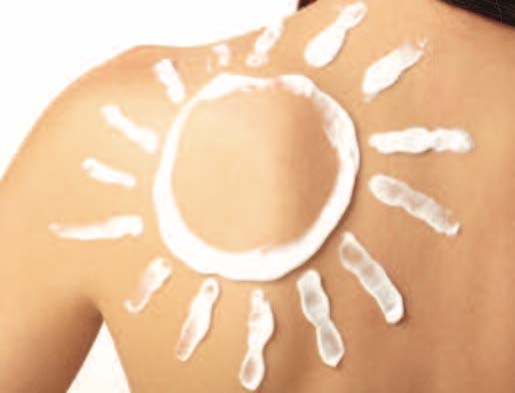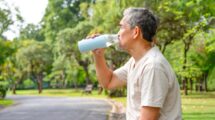Skin cancer could be your silent killer
July/August 2019
Unfortunately, skin cancer doesn’t disappear under all those winter layers. It’s estimated that close to 100,000 new cases of skin cancer will be diagnosed this year —nearly half of all new cancers. With the summer fast approaching, it is important to understand skin cancer updates and do’s and don’ts.
First, some good news: most of those new skin cancers are non-melanoma forms, which have a cure rate approaching 100 per cent if found and treated early. But the cancers aren’t always obvious; many appear like small sores or pimples, but they can also look like red, scaly patches or even like a pale scar. That’s why it’s best to have an experienced dermatologist check your skin every year.
What’s the best way to protect yourself?
Get regular screenings for skin cancer from your dermatologist or at a public screening event. Check to see if your hospital or senior centre hosts these screenings. Wear sunscreen every day, summer and winter. Sun damage is cumulative, so the best way to prevent cancer is to develop the habits of sun protection and sun avoidance such as wearing sunscreen and hats. Be sure to protect your grandchildren too; most sun exposure occurs during childhood. Ask your dermatologist about a skin self-exam every month.
Sun safety
Watch for the warning signs that you’ve had too many rays.
We can’t wait to get out in the early summer air. The sun has many benefits, including a healthy dose of natural Vitamin C. But these days, the sun brings with it more harmful attributes than good ones — that is, if you don’t take precautions to stay safe.
In fact, warm summer days filled with bright sunshine aren’t always good for you, according to most dermatologists and other skin specialists. In addition to the harmful skin cancer causing UV rays that the sun produces, the heat associated with sun exposure can also put a quick halt to your outdoor activities.
Heat rash
Also known as prickly heat, this rash-like condition occurs during hot weather when close-fitting garments restrict air circulation and cause inflamed sweat glands. It affects children most often and can be precursors to heat stroke.
The symptoms are an irritating raised, red rash.
The best way to beat it is to take frequent lukewarm baths and use calamine lotion.
The best way to prevent heat rash is to keep clean and cool, limit exposure to the sun and avoid excessive exercise or activity on hot days. Wear clothing made of breathable, natural fibres. A persistent rash may indicate other problems, such as allergies or measles (yes, there are older adults who have never had them). If the inflammation doesn’t ease within one day, make sure you go to the doctor.
Heat stroke
Heat stroke is a life-threatening condition in which the body’s temperature rises far above normal. Essentially, the body’s temperature-control mechanism fails. Seek medical attention immediately when you see a combination of these symptoms: sweating stops and body temperature rises rapidly, rapid pulse, noisy breathing, convulsions or vomiting and hot flushed skin. Keeping the body temperature lowered with a cool wet sheet or immersing the person in cool water or sponging with cool water— especially in the armpits, neck and groin areas — is the most urgent first aid for heat stroke.
Sun safety for the skin
Over exposure to the sun can cause sunburn, pain and long-term risk of skin cancer, says St. John’s Ambulance. People with fair skin are most susceptible to sunburn. However, no matter what your skin type, sunburn can be sustained by anyone. Prevention is your best bet. Use a sunscreen that is strong enough to keep out harmful rays of the sun.
Ultraviolet radiation
Exposure to solar and artificial ultraviolet radiation (UVR) is widely recognized as an important and preventable cause of skin cancer.
The main source of UVR in the environment is the sun.
According to the CDA, ultraviolet light works in many different ways to cause skin cancer. Each time skin is exposed to sun and becomes tanned or burned, damage is done to individual cells and to DNA. Some cells die and some repair themselves by getting rid of the damaged DNA.
Cells that cannot repair themselves, eventually become defective cells. UVR lowers the body’s immune system and this makes it difficult to destroy defective cells. Defective cells that are not destroyed slowly grow and produce a tumour.
There are three types of UVR sun rays:
- UVA rays, while not as powerful as UVB, penetrate more deeply into the skin and are responsible for contributing to photo damage and wrinkling of the skin, premature aging and skin cancer. UVA is prevalent in tanning parlours where tanning devices can emit two to five times more UVA than is found in natural sunlight.
- UVB rays are shorter but stronger than UVA. UVB primarily affects the skin’s outer layers and is thought to be the primary cause of sunburn, skin aging and skin cancer. UVB rays tend to be more intense during the summer months, at higher altitudes, and at locales closer to the equator. Repeated exposure to UVB over the course of one’s life can cause skin cancer and alter the immune system.
- UVC rays are the strongest, most dangerous rays. However, little attention is given to UVC rays as they are normally filtered by the ozone layer and do not reach the Earth.
Don’t curb your activity — just cover up!
- Try to reduce sun exposure between 11 a.m. and 4 p.m. (e.g., schedule outdoor sporting events for early evening; if you’re a jogger, plan to do so first thing in the morning);
- Seek shade or create your own shade (e.g., choose outdoor cafés with umbrellas or covered porches);
- Wear clothing to cover your arms and legs;
- Wear a wide brimmed hat and wrap-around sunglasses with UVA and UVB protection;
- Apply sunscreen with minimum SPF #15 or higher with UVA and UVB protection (higher for individuals spending extended periods of time out of doors).







